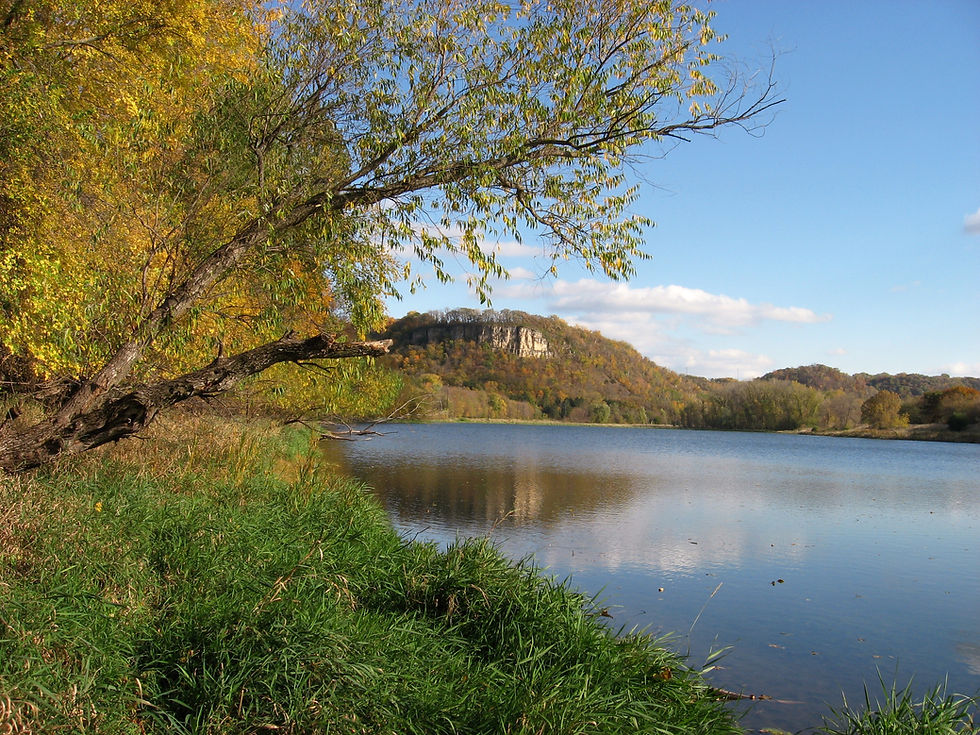Spring Arrives Despite Erratic Weather
- wacoutanaturenotes
- Mar 21
- 3 min read
Since my last post, there have been many signs of spring despite the variety of weather conditions. I will try to feature a few of these new arrivals. There is local folklore stating "A robin's tail will have snow on it three times before spring is really here." Such is the case this year.

Eagles start their mating and nesting activities based on the increasing amount of daylight. At this latitude, eagles start nesting around the end of February. The best nest to watch in Wacouta Township is located at the far east end of Wacouta Pond.

To watch eagle activity in the nest it is best to check out a variety of eagle cams. Unfortunately, the camera operated by the Minnesota DNR was blown out of position during a recent strong wind event. Another possible camera to check out is located in Decorah, Iowa. Actually, they have cameras at two nests. One nest is used by a pair of eagles and the other by a pair of Canada geese!

I observed my first turkey vultures of this spring on March 15th. This makes two years in a row in which these migrants have arrived earlier than normal.
For many years, I could expect them to show up on March 20th (first day of spring). I suspect out two consecutive mild winters have had something to do with this.

On the same day of vulture arrivals, male red-winged blackbirds also appeared to claim their wetland territories.
Usually at the first sign of spring, mature males with their bright red patched wings can be heard singing their cheery songs.These songs are described as a liquid gurgling "konk-la ree" ending in a trill. It will be a month or more before the females show up.

In the early morning of March 13th, Dan Dietrich and I hiked out to Rattlesnake Bluff. It was a nice sunny day with calm winds after a couple days of strong northwest winds.
During our 30 minute hike to the edge of the bluff, we observed at least 25 flocks of migrating tundra swans. Interspersed in these flocks were smaller flocks of Canada geese taking advantage of the calm flying conditions.
The next day, Earl Bye of Red Wing Wild Photography sent me this most unusual photo of a mixed flock of geese and swans. He suggested this might be a new form of car pooling. Thanks for the photo Earl.

This is the time of year maple syrup enthusiasts get into action. Best conditions for productive maple sap runs are freezing nights followed by sunny days with temperatures in the 40's.
For many years while I conducted maple syrup programs at the Environmental Learning Center, we would start tapping around St. Patrick's Day. The season usually lasted 3 to 4 weeks.
I took this photo of male flowers on the silver maple tree in our front yard on March 15th. Unfortunately once the buds on the tree open up and flowers appear, the sap becomes cloudy and is no longer useful for making syrup.
It has become obvious in recent years climate change is definitely negatively impacting commercial and backyard maple syrup production activities.

In the afternoon of March 20th, I had the good fortune of visiting a sugarbush located in Wacouta township for the past 20 years. Fortunately for John and Charlie Friedrich, the location of their project is somewhat protected from the spring high temperatures we have been experiencing this spring. Their maple trees have not budded out yet like the previous observation in our front yard.

Some folks might think making maple syrup is simply a matter of collecting and boiling down the sap. This is a long way from reality. I was very impressed to observe the numerous steps, refinements and adaptations that John and Charlie have developed to make their project successful.
The most syrup their 45 tap effort has yielded over the years was 22 gallons in 2022. What they are most proud of is never having sold a drop of syrup. Instead, most of their syrup has been given away as much appreciated gifts.

The Ingram Barge Company tow passed through the Head of Lake Pepin at 10:00 am on March 19, 2025. The tow originated in the Quad Cities in Iowa and Illinois, pushing 12 loaded barges headed for St. Paul.
A big thank you to our neighbor Steve Betcher for providing this photo.




I really enjoy your posts.
We’re getting anxious for spring and it’s great to notice the signs all around us.
Thank you for the Spring update! My bees have been out every time it gets above 50 degrees. They've been bringing back pollen since mid March. I usually think its from budding willows, but I see it could be silver maple pollen. This blog update, in its self, is another welcome sign of Spring!
Always interesting, Bruce. I enjoyed the car-pooling Canada geese and swans!
Locally oriented and illustrated phenology is a real treat. Thanks, Bruce!
Thanks, Bruce